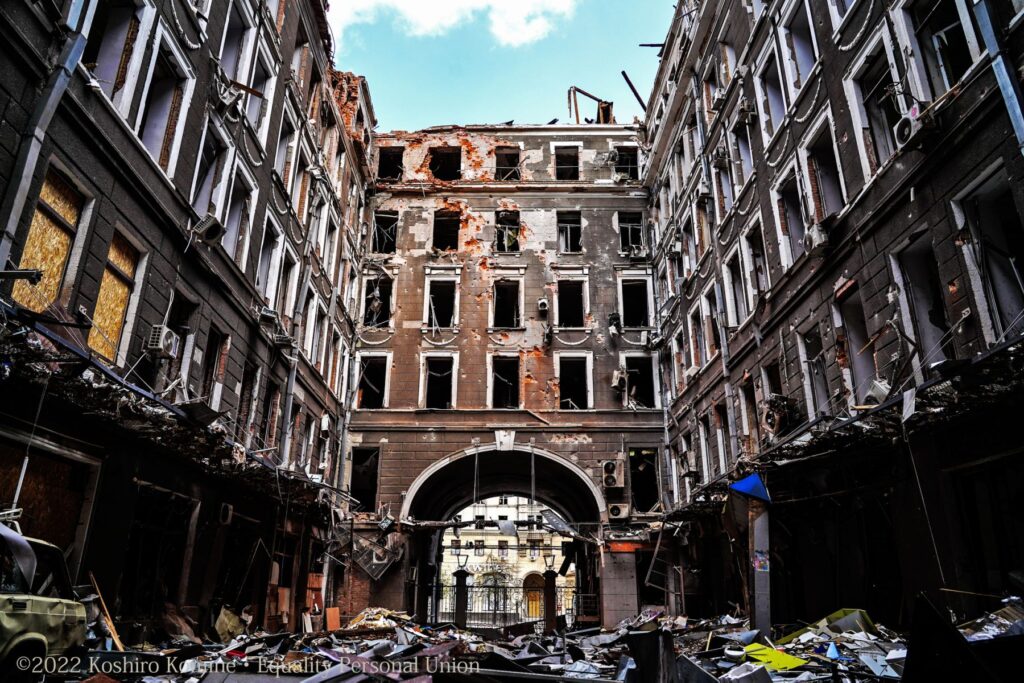The story of the Japanese volunteer soldiers was widely reported and talked about in Japan, although not much is known what happened after the Ukrainian embassy stopped recruiting them.
In front of Lviv train station in late April, I spotted a pair of Asian men wearing camouflage uniforms with Japanese flag on it.
When I talked to them, they naturally responsed in Japanese. They were definitely volunteer soldiers who had come to Ukraine. They landed in Ukraine apply for volunteer soldier to become.
One of the Japanese, Mr. A, a former Self-Defense official in his 20s, seemed to be gathering information around the station and at military facilities until his recruitment and assignment were decided. Those who has no combat experience are not assigned to the front lines and are on standby. As of April, 2022.
Around the station, other Japanese and volunteers in camouflage uniforms with flags of Taiwan, Canada, and other countries are seen around.
There are 5.6 volunteer soldiers that I am still in contact with, and as far as I know, there are more than a dozen people working in Ukraine. The applicants are various, including former Self Defense Force officers, military enthusiasts, YouTubers, and others. Some of them are thinking of combining their work with humanitarian aid. Recruitment criteria require 80% communication in either English or Ukrainian. Language is given priority over military experience. Equally important as language is a strong will.
Volunteer soldiers are not assigned to the regular Ukrainian army, but to the foreign units of the territorial defense corps of the civilian army. Therefore, their treatment differs from that of the regular army. They must provide their own combat uniforms and equipment, except for weapons, and in the worst case scenario, if captured, they may be executed. A Japanese volunteer soldier who went to the front line early in the war and disappeared.

Japanese who failed in the selection process due to language barriers are not completely out of the question. As of July 4, a Japanese unit (a.k.a. Ninja) is scheduled to be formed. They are currently undergoing training in eastern cities.
The term “Japanese contingent” reminds one of the U.S. Army’s 442nd Regimental Combat Team, Daniel Inouye, and others, which was composed of Japanese Americans in 1942. Their activities were among the most highly decorated in the history of the United States, and they are now a required course in the U.S. Army’s classrooms. Will they be able to make their mark on history? Military affairs aside, I would like to express my respect to the Japanese people for their various activities in the international community. I wish them all a safe return home.
Equality Personal Union Editorial Department
Coverage / photography by Koshiro Komine, 45 years old, from Kanagawa Prefecture
He has been reporting on Ukraine and neighboring countries in order to document the people who are at the mercy of Russia’s invasion of Ukraine. Previously, he worked as a commercial photographer in a variety of genres, and in recent years he has been involved in documentary photography. In Japan, he has covered artisans facing tradition and nature, and in overseas, he has covered the Tengbezi (minstrels) in Kurdistan, Turkey, the Hong Kong protests (2019), and the Tokyo Olympics opposition movement (2021), among others.
